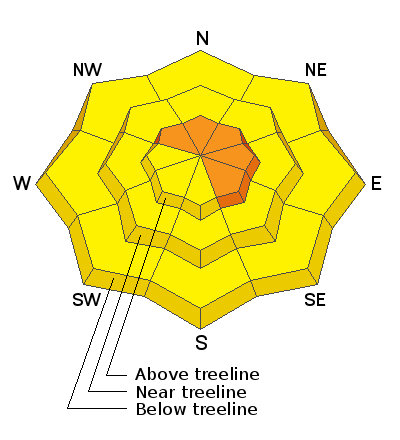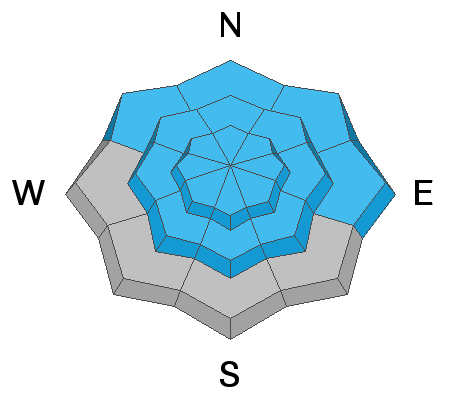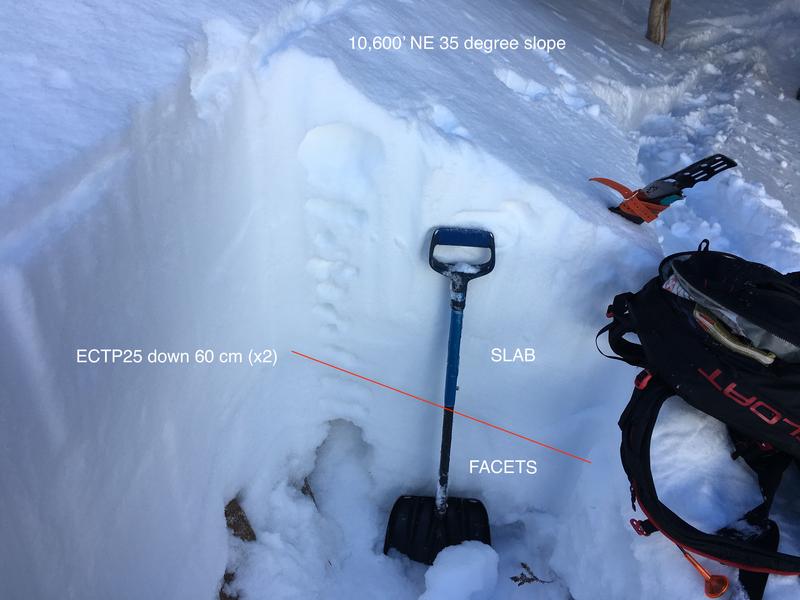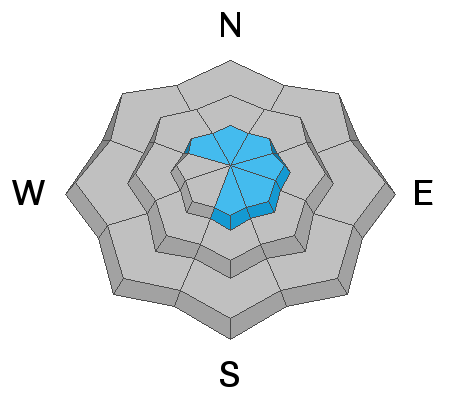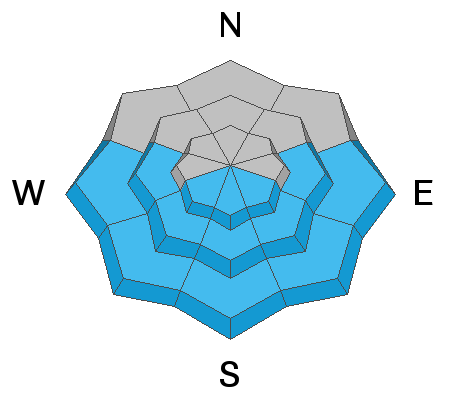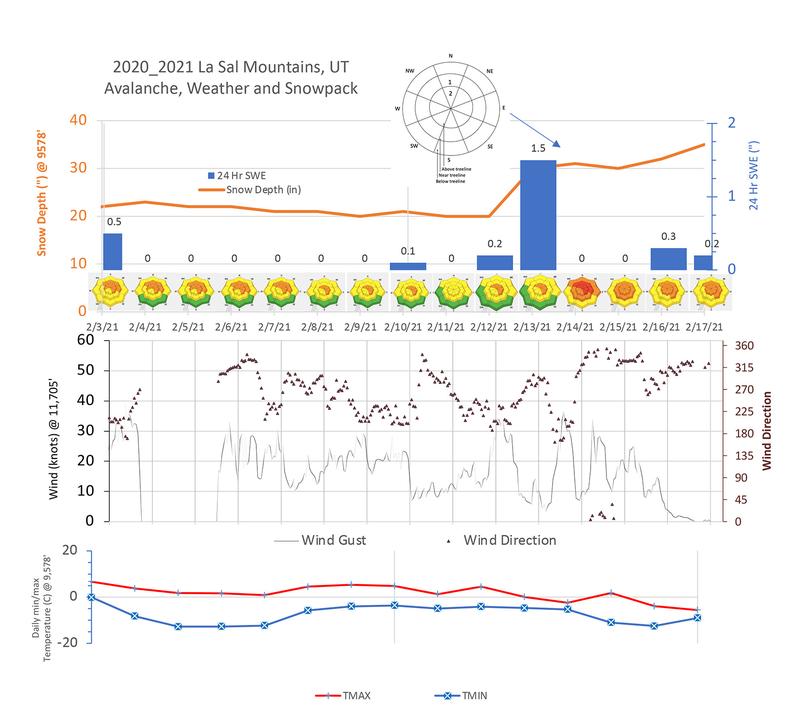The Geyser Pass Road was plowed on Tuesday, but 3"-5" of new snow has fallen since then. 4x4 with good tires is recommended.
The Lower Utah Nordic Alliance (LUNA) last packed and rolled the lower meadow through Gold Basin on Thursday.
24 Hour Snow 0" 72 Hour Snow 2" Base Depth in Gold Basin 48" Wind W 5-10 Temp 18 F
Today it will be sunny with increasing clouds. Highs 30 to 40 F. Northwest winds 10 to 15 mph in the afternoon. A low pressure trough entering the area tomorrow evening will bring clouds and wind, but no precipitation to our area.
Snowpack Discussion
Warm temperatures and time have helped consolidate the snowpack, but weak layers are still present on many aspects and elevations. Yesterday's high at 10,000' was 38 degrees, and all but the shadiest of aspects now have 1-2 cm melt-freeze crusts. Early in the day I noticed surface hoar on shady aspects near valley bottoms. Most southerly slopes had pinwheels and roller balls and I even observed these on easterly aspects. Lots of glopping and "fly-paper" conditions, so don't forget your wax! Breaking trail in upper Gold Basin, I found supportive snow and did not experience cracking or whumpfing. However, weak snow can be found in most areas, and is easily identified in snowpits or by probing with a ski pole. The snow we received last week has settled into a 1-3' slab that may disguise the buried weak layers underneath, however, in areas where the slab is thinner, deep and dangerous avalanches may still be triggered. On a NE aspect near treeline, I observed poor snowpack structure and a somewhat stubborn slab. On a west aspect near treeline, Travis Nauman reported signs of a strengthening snowpack in this
observation. By contrast, this
observation from the Corkscrew Glades reports collapsing and whumpfing to be fairly widespread. The bottom line is that a weak, faceted snowpack is not going away anytime soon, and will continue to produce problems with each additional storm.
It's been a week since any natural slab avalanches have occurred. Natural activity from last weekend's storm was surprisingly low, but additional reports of avalanches continue to trickle in. With the current poor snowpack structure, this means many steep slopes are hanging in balance just waiting for a human trigger.
